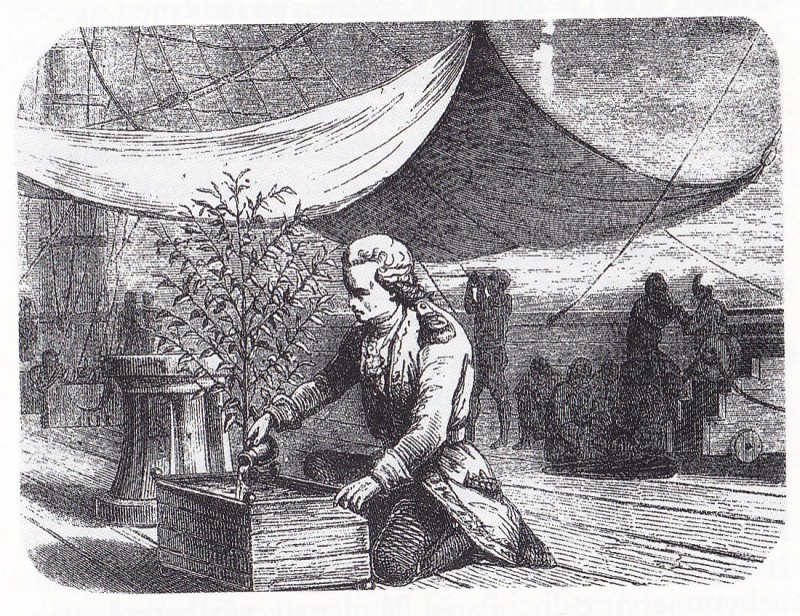Gabriel de Clieu on:
[Wikipedia]
[Google]
[Amazon]
 Gabriel-Mathieu Francois D'ceus de Clieu (c. 1687 – 29 November 1774) was a French naval officer and the governor of
Gabriel-Mathieu Francois D'ceus de Clieu (c. 1687 – 29 November 1774) was a French naval officer and the governor of
 Gabriel-Mathieu Francois D'ceus de Clieu (c. 1687 – 29 November 1774) was a French naval officer and the governor of
Gabriel-Mathieu Francois D'ceus de Clieu (c. 1687 – 29 November 1774) was a French naval officer and the governor of Guadeloupe
Guadeloupe (; ; gcf, label=Antillean Creole, Gwadloup, ) is an archipelago and overseas department and region of France in the Caribbean. It consists of six inhabited islands—Basse-Terre, Grande-Terre, Marie-Galante, La Désirade, and the ...
from 1737 to 1752 and the founder of Pointe-à-Pitre
Pointe-à-Pitre (; gcf, label=Guadeloupean Creole, Pwentapit, , or simply , ) is the second largest (most populous) city of Guadeloupe after Les Abymes. Guadeloupe is an overseas region and Overseas department, department of France located in the ...
. He was awarded the rank of commander of the Royal and Military Order of Saint Louis.
De Clieu is celebrated for his claim to have introduced coffee
Coffee is a drink prepared from roasted coffee beans. Darkly colored, bitter, and slightly acidic, coffee has a stimulant, stimulating effect on humans, primarily due to its caffeine content. It is the most popular hot drink in the world.
S ...
to the French colonies of the Western Hemisphere in the 1720s and his support for its cultivation.
Introduction of Coffee to Martinique
De Clieu was born inDieppe
Dieppe (; Norman: ''Dgieppe'') is a coastal commune in the Seine-Maritime department in the Normandy region of northern France.
Dieppe is a seaport on the English Channel at the mouth of the river Arques. A regular ferry service runs to Newha ...
. The story of his introduction of coffee comes from his account in the ''Année littéraire'' of 1774. According to this account, he arranged to transport a coffee plant (or perhaps several) from the greenhouses of the Jardin royal des plantes (which had originally received two plants from lieutenant général d'artillerie M.Ressou who brought them back from Holland in 1713) to Martinique
Martinique ( , ; gcf, label=Martinican Creole, Matinik or ; Kalinago: or ) is an island and an overseas department/region and single territorial collectivity of France. An integral part of the French Republic, Martinique is located in th ...
in 1720. According to de Clieu's account, water was rationed on the voyage, and he shared his ration with the seedlings. The story is repeated in many histories of coffee. However, a recent history points out that though it may well be true that de Clieu brought a seedling to Martinique, and perhaps even that he shared his water ration with it, coffee was already growing in the Western Hemisphere: in the French colony of Saint-Domingue
Saint-Domingue () was a French colony in the western portion of the Caribbean island of Hispaniola, in the area of modern-day Haiti, from 1659 to 1804. The name derives from the Spanish main city in the island, Santo Domingo, which came to refer ...
since 1715 and in the Dutch colony of Surinam since 1718.
Museum
De Clieu died inParis
Paris () is the capital and most populous city of France, with an estimated population of 2,165,423 residents in 2019 in an area of more than 105 km² (41 sq mi), making it the 30th most densely populated city in the world in 2020. S ...
. His descendants in Dieppe
Dieppe (; Norman: ''Dgieppe'') is a coastal commune in the Seine-Maritime department in the Normandy region of northern France.
Dieppe is a seaport on the English Channel at the mouth of the river Arques. A regular ferry service runs to Newha ...
plan to open a museum to commemorate the legend of De Clieu.Stewart Lee Allen, ''The Devil's Cup'', New York: Ballantine, 1999, 158.
Notes